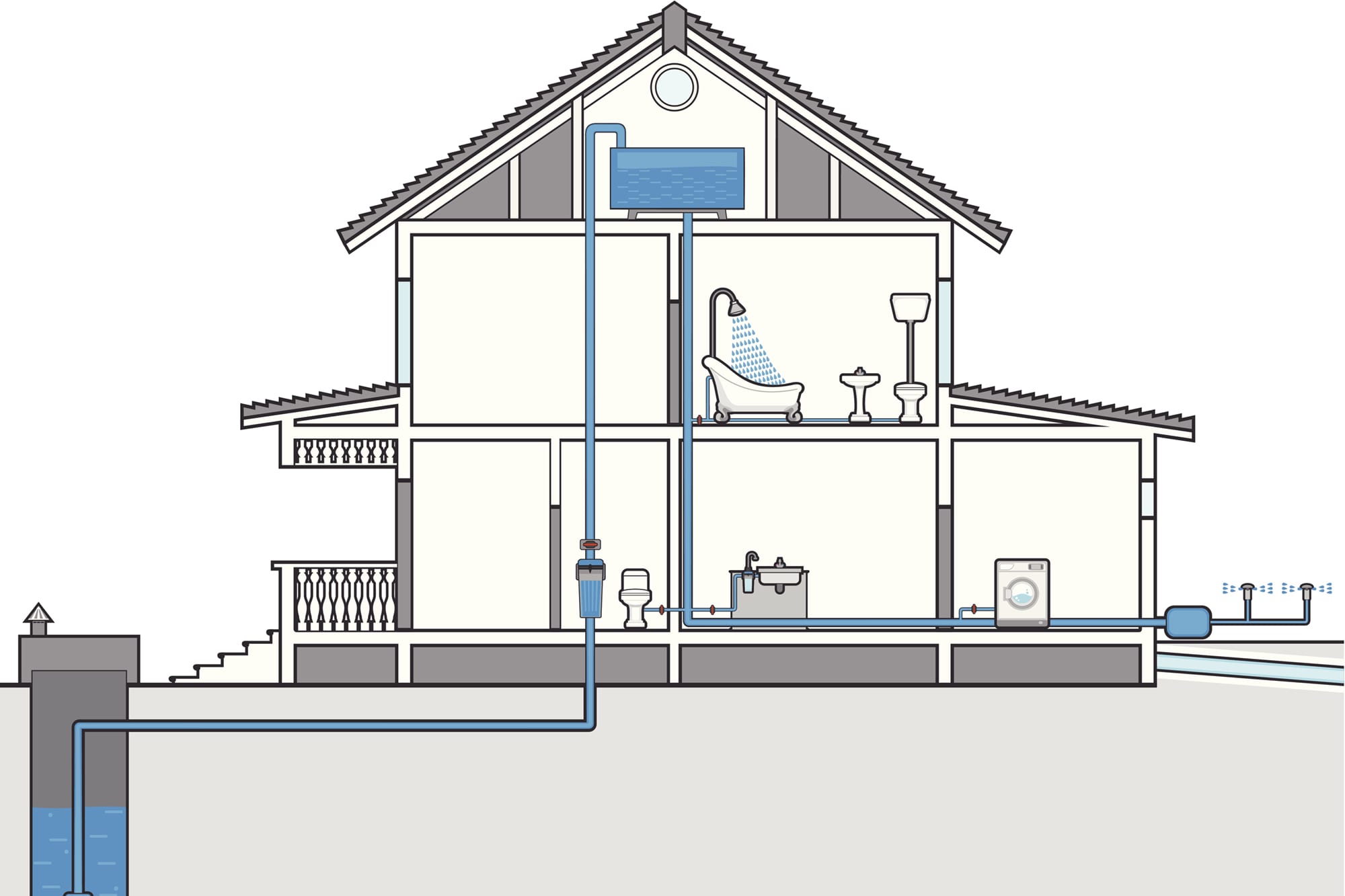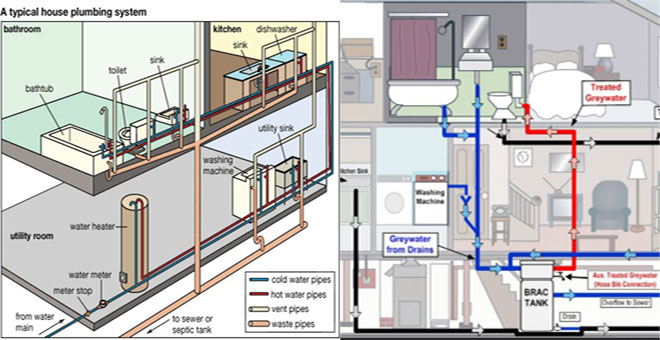How do you actually feel in regards to Plumbing Installation 101: All You Need to Know?

Understanding how your home's plumbing system works is essential for every property owner. From delivering tidy water for alcohol consumption, cooking, and showering to safely eliminating wastewater, a well-maintained pipes system is crucial for your household's wellness and convenience. In this thorough guide, we'll explore the complex network that comprises your home's plumbing and deal suggestions on upkeep, upgrades, and taking care of usual issues.
Intro
Your home's pipes system is more than just a network of pipes; it's an intricate system that guarantees you have access to clean water and efficient wastewater elimination. Recognizing its components and exactly how they work together can assist you protect against costly repairs and make certain everything runs smoothly.
Standard Parts of a Pipes System
Pipes and Tubes
At the heart of your pipes system are the pipes and tubes that carry water throughout your home. These can be constructed from numerous materials such as copper, PVC, or PEX, each with its advantages in regards to toughness and cost-effectiveness.
Components: Sinks, Toilets, Showers, etc.
Components like sinks, bathrooms, showers, and tubs are where water is used in your house. Comprehending just how these components connect to the plumbing system helps in identifying issues and planning upgrades.
Valves and Shut-off Points
Shutoffs control the circulation of water in your plumbing system. Shut-off shutoffs are crucial throughout emergencies or when you require to make repair work, enabling you to separate parts of the system without disrupting water circulation to the whole home.
Water Supply System
Key Water Line
The major water line connects your home to the local water supply or a personal well. It's where water enters your home and is dispersed to various fixtures.
Water Meter and Pressure Regulator
The water meter actions your water use, while a stress regulatory authority makes sure that water moves at a safe stress throughout your home's plumbing system, protecting against damages to pipelines and components.
Cold Water vs. Warm water Lines
Recognizing the difference in between cold water lines, which provide water straight from the major, and hot water lines, which bring heated water from the water heater, aids in fixing and preparing for upgrades.
Drain System
Drain Pipeline and Traps
Drain pipes lug wastewater away from sinks, showers, and toilets to the sewage system or sewage-disposal tank. Traps avoid drain gases from entering your home and also catch particles that might create clogs.
Ventilation Pipelines
Air flow pipelines allow air right into the water drainage system, avoiding suction that might reduce drainage and create catches to vacant. Correct ventilation is essential for keeping the honesty of your pipes system.
Significance of Proper Drain
Making certain appropriate water drainage stops backups and water damage. Consistently cleaning drains and preserving traps can stop costly fixings and extend the life of your pipes system.
Water Heater
Sorts Of Hot Water Heater
Water heaters can be tankless or traditional tank-style. Tankless heaters warm water on demand, while containers save warmed water for immediate usage.
Upgrading Your Plumbing System
Factors for Upgrading
Updating to water-efficient fixtures or changing old pipes can improve water quality, reduce water expenses, and enhance the worth of your home.
Modern Plumbing Technologies and Their Advantages
Explore innovations like clever leak detectors, water-saving toilets, and energy-efficient water heaters that can save money and minimize ecological influence.
Cost Factors To Consider and ROI
Determine the ahead of time expenses versus long-lasting cost savings when thinking about pipes upgrades. Many upgrades pay for themselves with reduced energy costs and fewer repairs.
Exactly How Water Heaters Attach to the Plumbing System
Understanding just how hot water heater link to both the cold water supply and warm water distribution lines helps in diagnosing concerns like inadequate warm water or leaks.
Upkeep Tips for Water Heaters
Routinely flushing your hot water heater to eliminate debris, examining the temperature level settings, and evaluating for leakages can prolong its lifespan and improve energy efficiency.
Typical Plumbing Issues
Leakages and Their Reasons
Leakages can occur due to maturing pipes, loose installations, or high water stress. Addressing leaks immediately prevents water damage and mold development.
Obstructions and Obstructions
Clogs in drains and toilets are frequently caused by purging non-flushable products or a buildup of grease and hair. Using drain displays and being mindful of what drops your drains can protect against obstructions.
Indications of Pipes Issues to Look For
Low water pressure, slow-moving drains pipes, foul odors, or abnormally high water costs are indicators of potential pipes troubles that need to be resolved immediately.
Pipes Upkeep Tips
Routine Inspections and Checks
Schedule yearly plumbing assessments to catch concerns early. Seek indicators of leaks, rust, or mineral accumulation in taps and showerheads.
DIY Upkeep Tasks
Straightforward tasks like cleansing faucet aerators, checking for bathroom leakages using color tablets, or shielding subjected pipes in cool environments can avoid significant pipes issues.
When to Call an Expert Plumber
Know when a pipes issue calls for specialist proficiency. Trying intricate fixings without proper knowledge can result in more damage and greater repair work expenses.
Tips for Reducing Water Use
Straightforward practices like dealing with leakages immediately, taking much shorter showers, and running complete lots of laundry and dishes can save water and reduced your utility bills.
Eco-Friendly Pipes Options
Think about lasting pipes materials like bamboo for floor covering, which is durable and environment-friendly, or recycled glass for counter tops.
Emergency Preparedness
Actions to Take Throughout a Plumbing Emergency
Know where your shut-off shutoffs are located and exactly how to shut off the water system in case of a burst pipe or significant leakage.
Value of Having Emergency Situation Calls Useful
Keep call details for regional plumbing technicians or emergency solutions conveniently offered for fast response throughout a plumbing situation.
Ecological Impact and Preservation
Water-Saving Components and Home Appliances
Setting up low-flow faucets, showerheads, and toilets can significantly reduce water use without compromising performance.
Do It Yourself Emergency Fixes (When Suitable).
Momentary solutions like using air duct tape to patch a leaking pipe or positioning a pail under a dripping tap can decrease damages up until a specialist plumber gets here.
Final thought.
Understanding the anatomy of your home's plumbing system equips you to preserve it effectively, saving money and time on repair services. By adhering to routine maintenance routines and staying informed regarding contemporary pipes innovations, you can ensure your plumbing system operates successfully for several years to find.
HOW YOUR PLUMBING SYSTEM WORKS
Which Pipes Do What?
Blue lines = fresh water supply entering the building Red lines = hot water supply entering the building Grey lines = pipes carrying waste away from the building and venting pipes carrying gases away from the building (through the roof) YOUR MAIN PLUMBING SYSTEMS
There are two main plumbing systems that support your home s basic plumbing needs one that brings clean water into your home, and one that sends dirty water away from your home. Connected to the toilet, bath, shower, and other faucets in your home, these two systems keep your water flowing in the right directions.
ACCESSING FRESH WATER
Fresh and clean water is brought into your home through the main water supply line . Filtered through one pipe, this water is pressured to flow into the various fixtures in your home at any given time.
This water can be sourced from a well located on your property, a pond or river (mostly cottages), or, as in most cases, from the city s municipal water treatment centre. However, it is important to note that water that is untreated, such as the water siphoned from ponds or rivers, may not be safe to drink. Personal water supplies always need to be treated for hardness and contaminants before consumed.
MUNICIPAL WATER SUPPLIES
Improve taste and odour Remove sediment Eliminate hardness Reduce chlorine COLD WATER SUPPLY VS. HOT WATER SUPPLY
Cold water flows into your home or building through the service line, which then distributes hot or cold water to your fixtures. This line is most commonly run through a central column that runs floor to floor. Hot water runs in short and straight pipes as the longer the pipeline, the more heat that will be lost in the transfer. Having shorter pipes also allows residents to access hot water more quickly.
WASTE WATER SYSTEM
Your wastewater system is divided into two parts pipes that send wastewater away from your home and venting pipes that send sewer gas away from your home. Sewage water travels through pipes that flush the water and waste towards local sewers that are operated and managed by your city or town. Most sewer systems rely on gravity to move the wastewater to where it needs to go.
The further away from your toilet or sink, the larger wastewater pipes become. This allows for waste to be disposed of from various parts of your home or business at once without pipe blockages. The angle and flow of these pipes are also essential for keeping your waste pipes clear of build up.
https://harrisplumbing.ca/how-your-home-plumbing-system-works/

I have been very enthusiastic about and I am assuming you liked our entry. Sharing is caring. Who knows, you might be doing someone a favor. Many thanks for going through it.
Schedule Free Estimate